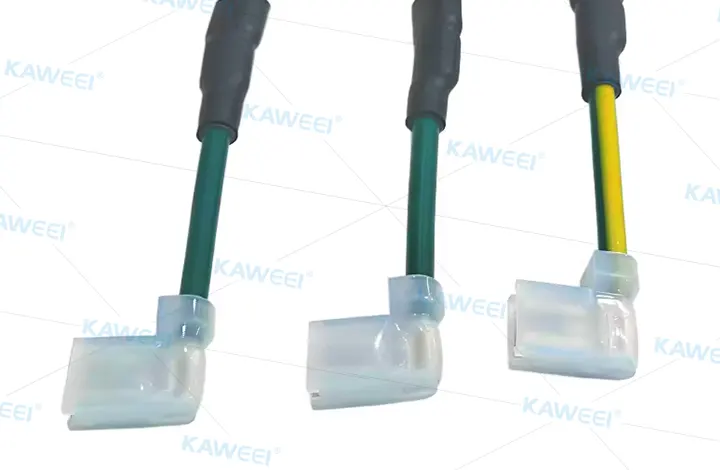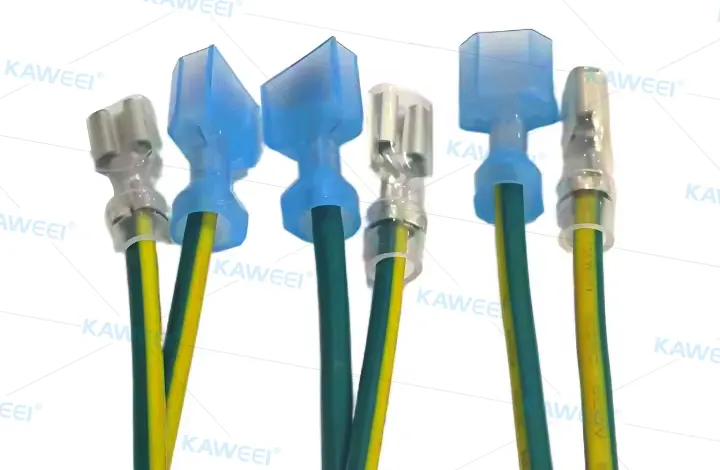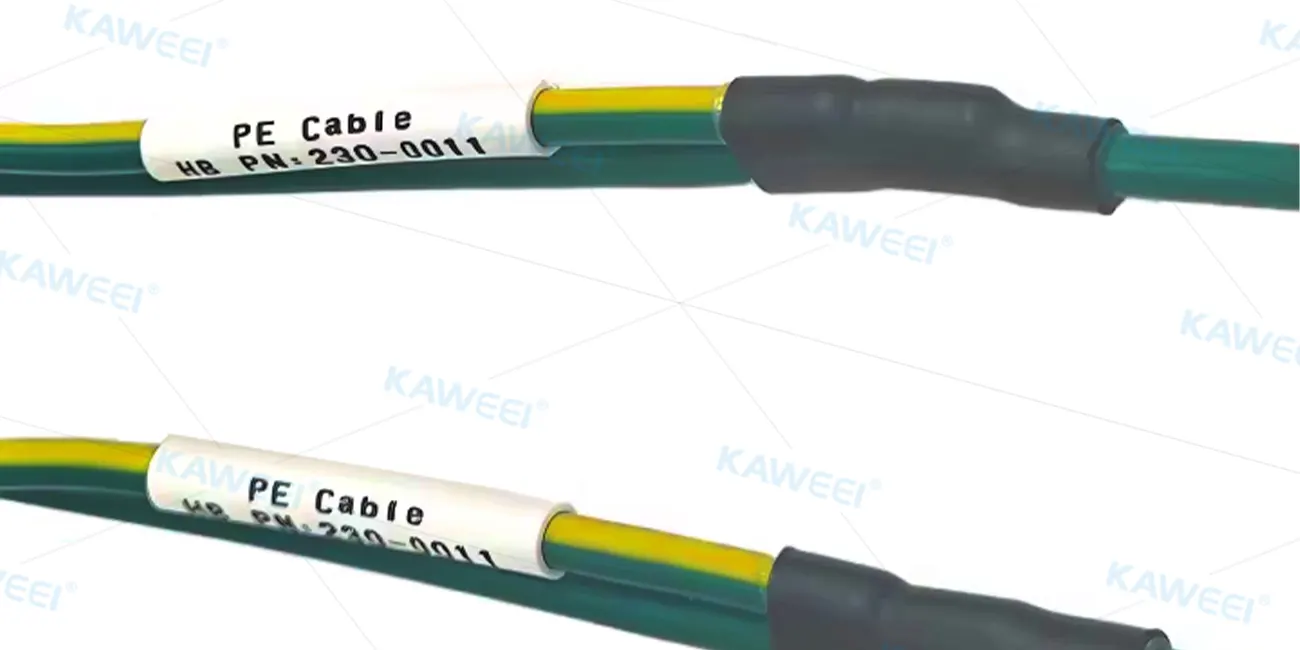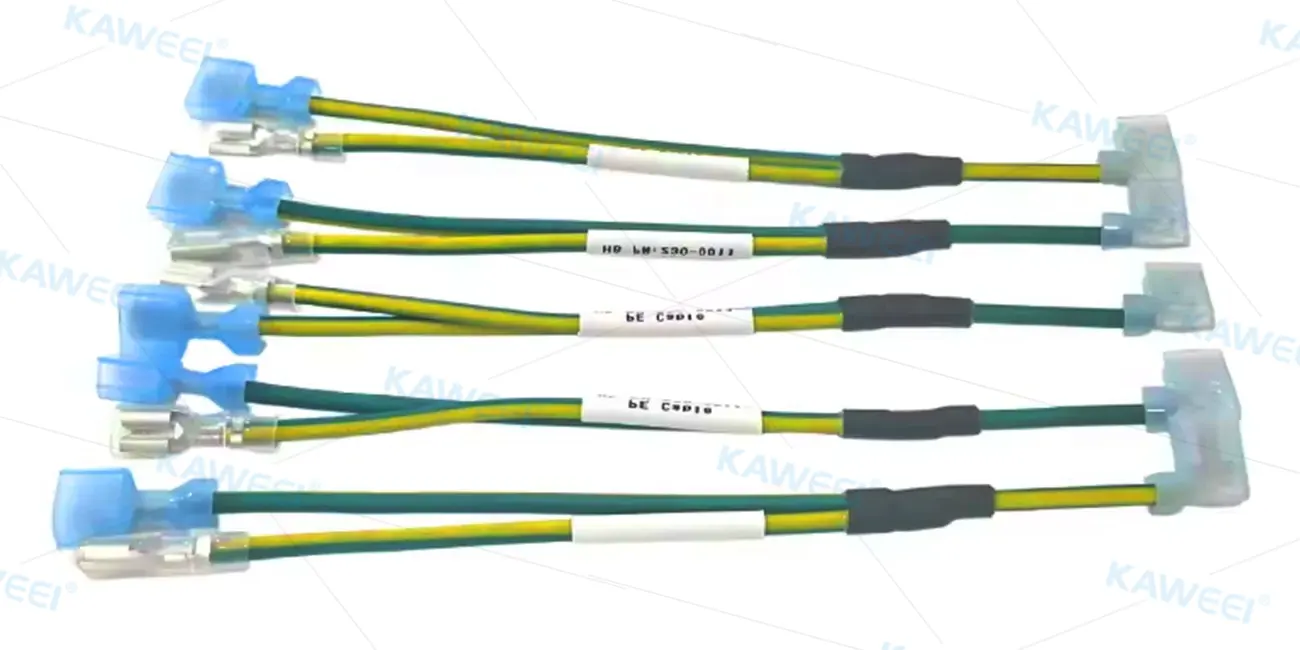
By quanyu lee
2025-07-31 08:47:01
Flag Terminal Cable Assemblies
Flag Terminal Cable Assembly Overview
Flag terminal cable assemblies are a professional wiring solution that integrates flag-shaped terminals with a compact, quick-connect cable design. This configuration enables fast, stable, and space-saving connections between electronic devices, making it ideal for applications where efficient signal or power transmission is critical. Flag-terminal cable assemblies offer compact design and reliable performance, making them widely used in automotive systems, consumer electronics, and industrial equipment.
This flag terminated cable assembly accepts UL1015 14AWG wire and features a 250mm single-ended flag terminal as the primary connector, ensuring a secure and space-saving connection.
It includes two auxiliary connectors:
- PN: 3-521142-2 terminal with 14-16AWG quick-connect terminals and a 0.250-inch crimp gauge;
- Insulated blue female terminals (14-16AWG) are compatible with a variety of device interfaces.
For added durability, the assembly is reinforced with black double-wall heat shrink tubing. This heat-shrink tubing provides reliable insulation, water resistance, and corrosion resistance, making it ideal for harsh environments.


Flag Terminal Cable Assembly Manufacturing Process
The production of a Flag Terminal Cable Assembly involves a series of precise and quality-controlled steps to ensure reliable performance and durability. Below is an overview of the key stages:

1. Wire Cutting
The process begins by using a fully automatic wire cutting machine to cut UL1015 14AWG wires to the exact design length, with an accuracy of ±5mm. To ensure consistency and quality, a laser inspection is performed to detect any surface damage or diameter deviations. This guarantees the base material meets high standards from the very start.
2. Wire Stripping
Both ends of the wires are stripped using an automated wire stripping machine. The stripping length is controlled within 8–10mm, which matches the terminal crimping specifications. Care is taken not to damage the inner copper conductor—100% conductor integrity is ensured. Additionally, any burrs on the insulation edges are removed to prevent crimping defects during assembly.
3. Terminal Crimping
Terminal crimping is a critical step in assembling a Flag Terminal Cable Assembly, and it is carried out in multiple stages with strict quality controls:
- Flag Terminal Crimping
The primary wire is fitted with a 250mm single-ended flag terminal. The crimping process includes both insulation and conductor crimping, ensuring tight wrapping without damaging the conductor (deformation ≤ 5%).
- Blue Female Terminal Crimping
Brass clips are crimped onto two branch wires using a symmetrical crimping die. This ensures uniform pressure and full contact between the clip, conductor, and insulation.
- Quick-Connect Terminal Crimping
PN: 3-521142-2 terminals and 250 female terminals are crimped onto the branch wires. The blades and sockets are kept clean and oxidation-free. After crimping, all connectors are inserted into test fixtures to verify smooth plug-in and removal performance.
Each crimping step is followed by a tensile strength test (≥ 222.5N) and a secondary electrical element inspection to ensure strong and stable connections.
4. Heat Shrink Tubing Application
To enhance environmental resistance, double-walled black heat shrink tubing is applied over the crimping areas using a 150–180℃ hot air gun.
Before shrinking, the crimp areas are cleaned to remove oil, dirt, and moisture. The tubing is positioned with at least 3mm overlap on both sides of the crimp zone. During heating, the process starts from the center and moves outward to avoid bubbles, ensuring a tight, fully shrunk seal (shrink ratio ≥ 2:1). After cooling, the tubing is inspected for cracks, wrinkles, and minimum thickness (≥ 0.8mm), meeting a 600V insulation resistance standard.
5. Electrical Continuity and Safety Testing
Every Flag Terminal Cable Assembly undergoes a comprehensive, automated three-part electrical test:
- Continuity Test: Verifies electrical flow between the flag terminal and both branch terminals (resistance ≤ 5mΩ).
- Open/Short Detection: Identifies internal open circuits or short circuits between conductors and terminals.
- Insulation Resistance Test: Measures insulation strength at 300V DC, ensuring resistance ≥ 10MΩ with no leakage risks.
All test data is automatically logged and archived, ensuring full traceability for every finished assembly.

The Flag Terminal Cable Assembly uses a simple one-to-two structure, combining a main flag terminal with two quick-connect terminals. It is built with quality UL-certified wires and protected by heat-shrink tubing for added durability. From wire and stripping to terminal crimping and testing, every step follows strict standards to ensure stable and reliable connections. Thanks to its sturdy design and solid performance, this cable assembly works well in many environments, including automotive, industrial, and electronic applications.



